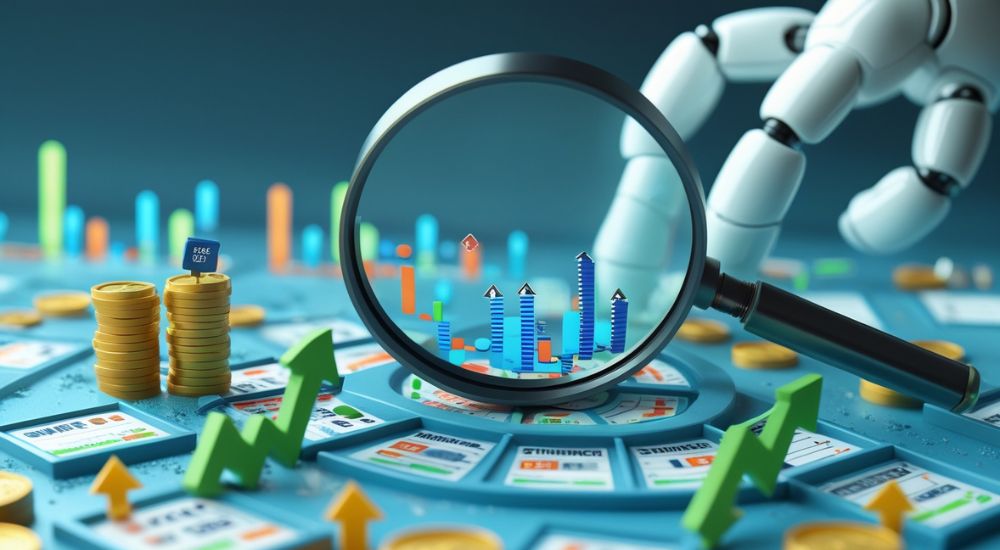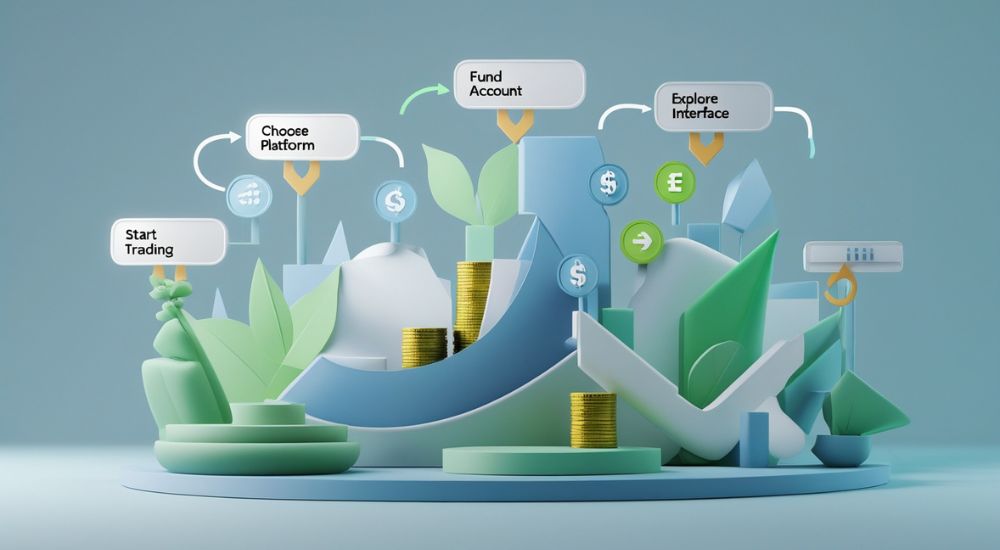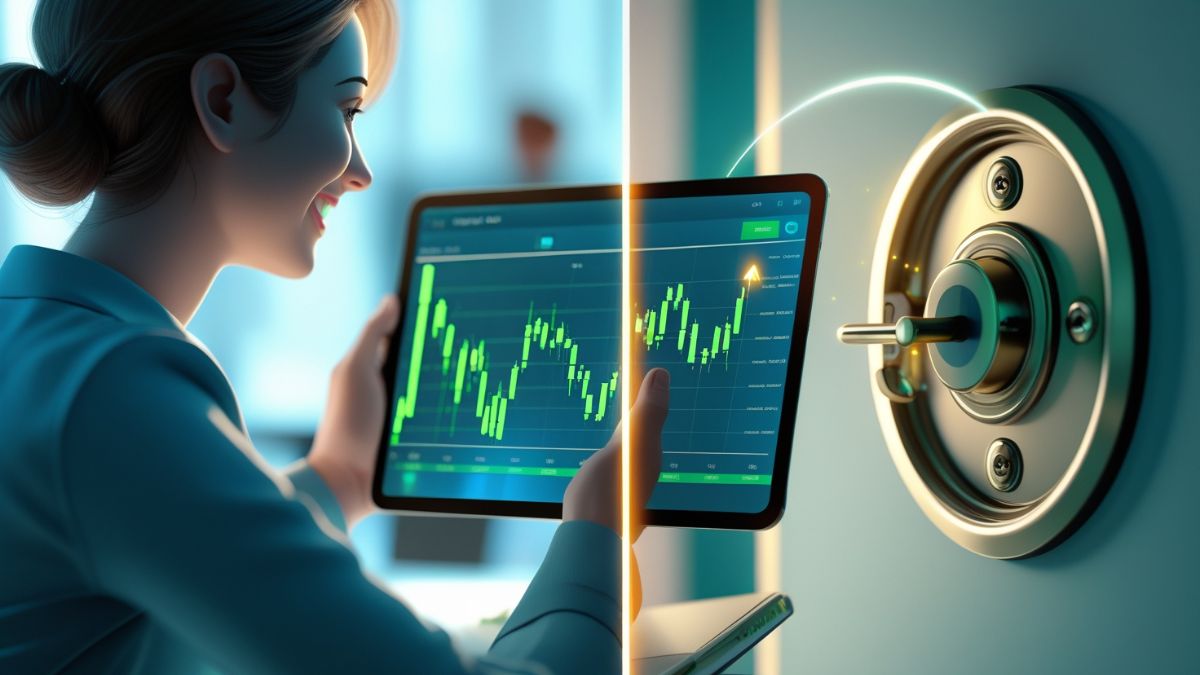Ready to Trade, But Afraid to Lose?
Have you ever wanted to dive into the stock market, pick winning stocks, and watch your wealth grow, but you’re too scared of losing the money you’ve worked hard for? You’re not the only one. It can be scary to get into the world of stocks because of the complicated charts, unpredictable price changes, and constant risk of losing money. But what if there was a way to feel the excitement of trading, try out your plans, and gain confidence without putting any money at risk?
This is where paper trading, or virtual trading or simulated trading, comes in. This powerful tool is like a personal stock market playground where you can learn, try new things, and improve your trading skills without any risk. We’ll take a close look at paper trading in this full guide, covering how it works, its many benefits, and how you can use it to make yourself a more confident and profitable investor with no risk.
Table of Contents
What is Paper Trading? 📝
When you trade paper, you buy and sell stocks with fake money instead of real money. It’s like trading stocks in the real world. You can think of it as a flight simulator for people who want to be pilots. You can practice using complicated controls, figuring out how to deal with different situations, and getting better at flying without the risk of crashing.
In the past, this meant writing down possible trades with a pen and paper. But these days, most “paper trading” is done on advanced online platforms that mimic real-time market conditions. These platforms give you a real stock market experience by showing you live stock prices, charts, news, and even advanced trading tools. It’s a great way to learn the basics of the stock market without putting any of your own money at risk.
Why is Paper Trading Essential for Every Investor? 🤔
Paper trading has a lot of benefits that are hard to put a price on, whether you’re a total beginner or an experienced investor looking to improve your strategies:
- Learning Without Risk: 🛡️ This is the best thing about it. You can make mistakes, try risky strategies, or even “lose” your whole virtual portfolio, and it won’t affect your real money. It is possible to really learn when you don’t have to worry about money.
- Testing and improving strategies: 🧪 Do you have a new idea for trading? Want to know if a certain technical indicator works? Paper trading is a safe way to test your ideas, figure out the best times to buy and sell, and see how different strategies work in different market conditions.
- Getting Stronger: 💪 Doing well on trades, even fake ones, and watching your fake portfolio grow can really boost your confidence. This mental edge is very important before you put your real money on the line.
- Getting to know how the market works: 📊 Learn more about how news, economic data, and events around the world affect stock prices. Watch volatility, liquidity, and market sentiment without having to worry about losing real money. If you want to learn more about how the stock market works, you should read our blog post called “What Is the Stock Market?” Explain the Basics for Beginners [Updated].
- Familiarity with Trading Platforms: 🖥️ Most paper trading platforms are very similar to their real-money counterparts. This lets you get used to the interface, the different kinds of orders (market order, limit order, stop-loss), the charting tools, and other features before you go live.
- Control your feelings: 🧠 Fear and greed are two emotions that come up when you trade. Paper trading helps you learn how to deal with these feelings and gives you the self-control you need to trade well in the real world.

How Does Paper Trading Work? ⚙️
Paper trading is easy to do and works just like the real stock market:
- Virtual Money: 💰 You start with a virtual cash balance that can be anywhere from $10,000 to $1,000,000, depending on the platform. This is your “fun money.”
- Real-Time Data: ⏱️ Most platforms give you real-time or slightly delayed market data, so you can see current stock prices, bid/ask spreads, and trading volumes.
- Place Orders: 🛒 You can place buy or sell orders for different stocks, ETFs, or even other financial instruments, just like in real trading. This depends on what the platform has to offer. You will need to say how many you want, what kind of order you want (market, limit, stop-loss), and sometimes how long you want it to last.
- Tracking Your Portfolio: 📊 The platform keeps track of how your virtual portfolio is doing automatically, showing you your gains or losses, the value of your portfolio, and your open positions.
- Tools for Research: 🔎 Many platforms have research tools, news feeds, and charting features built in, which help you make smart (virtual) choices.
- The Learning Curve: 📈 You have to keep learning all the time. Look at your virtual trades and figure out why some worked and others didn’t. Then change your strategies based on what you learned.
Choosing the Best Paper Trading Platform 💻
Choosing the right paper trading platform is important because there are so many to choose from. Think about these things:
- Real-Time Data: ⏱️ Does it give you market data that is up to date or only slightly delayed?
- Asset Classes: 📊 Does it let you practice with the assets you want to (stocks, options, forex, crypto)?
- User Interface: 🧑💻 Is it easy to understand and use? Does it look like a real brokerage platform that you might use in the future?
- Does it have advanced charting, technical indicators, news feeds, and other research tools?
- App for mobile devices: 📱 Is there a good mobile app for trading on the go?
- Does the platform have tutorials, guides, or webinars to help you learn?
- Community: 🤝 Some platforms have user groups where you can talk about strategies and learn from other people.
Some well-known platforms are
- TD Ameritrade’s thinkorswim PaperMoney is a very advanced platform for serious traders.
- Interactive Brokers’ PaperTrader is great for people who want to practice with a lot of different global assets.
- Investing.com and TradingView both have free, web-based simulators with a lot of charting tools.
- Sensibull (India-focused): Great for simulating options trading in the Indian market.
- Moneybhai by Moneycontrol (focused on India): A popular way to pretend to invest in Indian stocks and mutual funds.
Setting Up Your Paper Trading Account 🚀
It usually doesn’t take long or much effort to set up a paper trading account.
- Choose a Platform: ➡️ Based on the above factors, pick a platform that fits your learning needs.
- Sign Up: 📝 Look for “paper trading,” “demo account,” or “virtual trading” options on the platform’s website. Most of the time, you’ll need to give an email address and make a password.
- Put money into your account (virtually): 💰 Most platforms will automatically add a starting virtual balance to your account.
- Explore the Interface: 🧭 Take some time to figure out how to get around the platform and where to find stock quotes, charts, and order entry forms.
- Get Started with Trading! 🎉 Start by making small, imaginary trades to get a feel for how it works. Before you start the real thing, don’t forget to practice setting up a Demat account online, just like our guide on 5 Simple Steps to Create a Free Demat Account in India.

Strategies to Practice with Paper Trading 📈
Paper trading is like going to the gym to learn different stock market strategies:
- Fundamental Analysis: 💡 Learn how to spot companies that are worth less than they are by looking at their financial statements (revenue, profit, debt).
- Technical Analysis: 📊 Use Moving Averages, RSI, MACD, and Bollinger Bands to find entry and exit points. Our blog post “Unlocking Technical Analysis: The Investor’s Toolkit” is a great place to start.
- Day Trading: ⚡ Try buying and selling quickly on the same day. Know that things move quickly and there are a lot of risks.
- Swing Trading: 🔄 Try holding stocks for a few days or weeks to take advantage of price changes that happen over short to medium terms.
- Long-Term Investing: 🌳 Imagine building a portfolio of different types of stocks, such as growth stocks, dividend stocks, or ETFs, over the course of months or years. Our guide, 10 Different Types of Stocks for Smart Investors You Must Know, will tell you more about the different kinds of stocks.
- Risk Management: 🔐 It’s very important to practice putting in stop-loss orders to protect your gains and take-profit orders to limit your losses.
- The psychology of the market: 🎢 Watch how your feelings change when you win or lose in a game, and learn to make smart choices.
Common Mistakes to Avoid in Paper Trading ❌
You can’t lose money when you trade on paper, but you can still make mistakes that make it harder to learn:
- Playing with it like a game: 🎮 Don’t take it lightly. To get the most out of virtual trading, treat it like real trading.
- Ignoring the costs of a transaction: 💸 Some platforms might not take into account taxes or commissions. Keep in mind that these things happen in real trading.
- Too much trading: 💨 You shouldn’t make hundreds of trades just because they’re free. Put quality ahead of quantity.
- Not Writing Down Trades: ✍️ Write down your paper trades in a trading journal. Write down why you entered or exited, how you felt, and what happened. This is very important for learning.
- Not Setting Goals: 🎯 Decide what you want to get out of paper trading, like testing a certain strategy or getting a certain virtual return.
- Giving Up Too Soon: ⏳ It takes time to learn. Don’t let early losses in virtual games get you down.
Transitioning from Paper to Real Trading: When is the Right Time? ✅
This is the question that everyone wants to know! There isn’t a single answer that works for everyone, but these signs might help:
Consistent Profitability: 📈 Have you been able to make consistent virtual profits for a long time (like 3 to 6 months) using a set strategy?
Emotional Control: 🧘 Do you trust yourself to handle emotions like fear and greed, even when the market is going up and down?
Understanding Risk: ⚠️ Do you really understand the risks and have a strong plan for managing them?
Familiarity with the platform: 🖥️ Are you completely at ease with the trading platform and its features that you picked?
Start with a little bit of money: 💰 When you do make the switch, start with a small amount of real money that you don’t mind losing. As you get better and more confident, slowly put more money into your investments.
Never stop learning: 📚 The learning never stops. Keep learning and improving your strategies even after you start trading for real. If you want to keep learning, you might want to read our post “Mastering Stock Market Fundamentals for Long-Term Wealth.”

Expert Opinions on Paper Trading 🗣️
Many experienced traders and financial experts say that paper trading is an important first step.
- Mark Minervini, a well-known stock trader and author, often talks about how important it is to practice and backtest strategies before putting real money on the line. This is the important practice space that paper trading gives you.
- Kathy Lien, a well-known forex expert, says that new traders should practice on paper to learn how the market works and build discipline without having to worry about money.
- Charlie Munger, Warren Buffett’s late business partner, was not a “trader” in the traditional sense, but he always stressed the importance of learning and understanding things thoroughly before making investment decisions. This fits perfectly with the idea of paper trading.
The professionals all agree on one thing: practice, practice, practice. The safest and best way to get that practice is to trade on paper.
Conclusion: Your Foundation for Financial Success
Your Base for Financial Success фундамeнт
Paper trading is more than just a game; it’s a must-have tool for anyone who wants to do well in the stock market. It gives you a chance to learn, try new things, and gain confidence in a safe setting. You’re not just practicing when you do paper trading; you’re also building a strong base of knowledge, discipline, and strategic thinking that will help you when you switch to trading with real money.
So, don’t dive into the deep end until you know how to swim. Start trading paper today. Learn from your virtual wins and losses, and take the first step toward becoming a more knowledgeable, confident, and possibly profitable investor without any risk. The market is ready for your skilled hand!
Disclaimer ⚠️: This blog post is for educational and informational purposes only and does not constitute financial advice. Paper trading simulates market conditions but cannot fully replicate the emotional and psychological aspects of real-money trading. Always conduct your own thorough research and consider consulting with a qualified financial advisor before making any investment decisions. Investing in the stock market involves inherent risks, including the potential loss of principal.
Frequently Asked Questions (FAQs) ❓
1. Is paper trading truly risk-free?
Yes, from a financial point of view, paper trading is completely safe because you are using fake money. But there’s always the “risk” that you won’t learn well if you don’t take it seriously.
2. How long should I paper trade before real trading?
There is no set time limit. It depends on how fast you learn and how sure you are of yourself. A lot of experts say you should wait 3 to 6 months of consistently making money in virtual trading and really understanding your strategies before you think about trading with real money.
3. Can I make real money with paper trading?
No, paper trading uses fake money, so any “profits” you make are also fake. Its only purpose is to help people learn and practice.
4. Do all brokerage firms offer paper trading?
A lot of big online brokerages, especially those that cater to active traders, offer paper trading or demo accounts. Some smaller or niche brokers, on the other hand, might not. Always ask your favorite broker.
5. Is paper trading good for long-term investors too, or just traders?
Paper trading is very helpful for long-term investors, even though it is often linked to active trading. Without any real risk, it lets them practice diversifying their portfolios, allocating their assets, and figuring out how economic events affect their long-term holdings.

